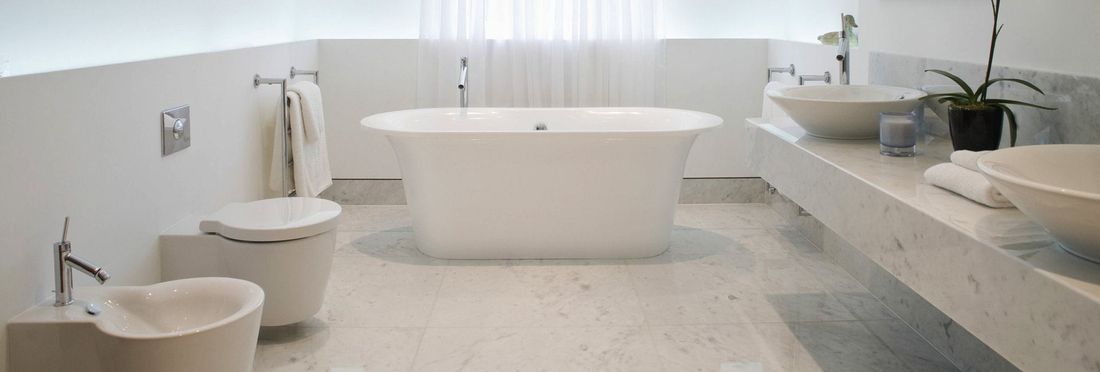Autumn is upon us and it won’t be long until those first winter’s chills set in.
One of the most common and potentially troublesome household problems many people face is frozen water pipes.
When temperatures plummet, the water inside pipes can freeze, leading to a range of issues, from inconvenience to costly repairs.
We’re here to tell you what to look out for: we will explore the causes of frozen pipes, the signs of frozen pipes, and, most importantly, how to safely and effectively unfreeze them.
Armed with this knowledge, you can mitigate the risks associated with frozen pipes and ensure a steady flow of water, even during the coldest months of the year.
Understanding the Causes of Frozen Pipes
Before we delve into the unfreezing process, it’s essential to understand why pipes freeze in the first place. Several factors can contribute to these common winter troubles:
Low Temperatures: When the temperature drops below freezing, water in exposed or poorly insulated pipes can freeze.
Lack of Insulation: Insulation acts as a barrier between the cold air and your pipes. Insufficient or damaged insulation can leave pipes vulnerable to freezing.
Exterior Exposure: Pipes located in unheated or uninsulated areas, crawl spaces, attics, or exterior walls, are more prone to freezing.
Cracks and Leaks: Even small cracks or leaks in pipes can allow cold air to infiltrate and freeze the water inside.
Stagnant Water: Water is less likely to freeze when it’s in motion. Stagnant or slow-moving water is more susceptible to freezing.
Inadequate Heating: Insufficient heating in your home can lead to lower indoor temperatures, making it easier for pipes to freeze.
Frozen pipes
Now that we’ve explored the causes, let’s look at how to identify frozen pipes and the potential consequences of not addressing the issue promptly.
Signs of Frozen Pipes
Recognizing the signs of frozen pipes is crucial because it allows you to take action before the situation worsens. Here are some common indicators of frozen pipes:
No Water Flow: The most apparent sign is when no water flows from a faucet. If you turn on a tap and only a trickle or nothing at all comes out, it could be due to a frozen pipe.
Frost on Pipes: In exposed areas like basements or crawl spaces, you might notice frost or ice buildup on the exterior of the pipes.
Unusual Sounds: Frozen pipes can make unusual noises. Listen for banging, creaking, or cracking sounds when you run water or turn faucets on and off.
Visible Swelling: If you can access the pipe, you may observe visible swelling or distortion due to the expansion of ice inside.
Foul Odor: In some cases, a foul smell may emanate from a blocked or frozen pipe, especially if there’s wastewater involved.
Decreased Water Pressure: Reduced water pressure in multiple fixtures could indicate a blockage or frozen pipe in your plumbing system.
Consequences of Ignoring Frozen Pipes
Ignoring frozen pipes can lead to a range of problems, each with its own set of consequences:
Burst Pipes: Perhaps the most severe consequence of frozen pipes is the potential for them to burst. As water freezes, it expands, putting tremendous pressure on the pipe’s walls. Eventually, the pressure can cause the pipe to rupture, resulting in water damage to your property.
Water Damage: Burst pipes can release a significant amount of water, leading to extensive water damage to your home or belongings. Repairing water damage can be costly and time-consuming.
Mould and Mildew: Prolonged exposure to moisture from a burst pipe can create conditions conducive to mould and mildew growth. This not only poses health risks but also requires remediation efforts.
Structural Damage: Water damage can weaken the structural integrity of your home, potentially leading to long-term issues like rot, compromised foundations, or compromised walls and ceilings.
Now that we’ve covered the causes, signs, and consequences of frozen pipes, let’s move on to the crucial part: how to safely and effectively unfreeze them.
Unfreezing Water Pipes: A Step-by-Step Guide
Unfreezing water pipes requires a systematic approach to ensure the safety of your plumbing system and avoid further damage. Here is a step-by-step guide to help you thaw frozen pipes safely and effectively:
1. Identify the Frozen Area:
Start by determining which section of the plumbing system is frozen. This can often be traced by following the flow of water from the affected faucet or fixture back to where it enters the house or originates from the main water supply.
2. Turn Off the Water Supply:
Locate the main water shut-off valve and turn it off. This is essential to prevent further water flow into the frozen pipe and avoid potential bursts when thawing begins.
3. Open Faucets:
Open both the hot and cold faucets connected to the frozen pipe. This will allow any water that starts to thaw to escape and relieve pressure within the pipe.
4. Apply Heat:
There are several safe methods to apply heat to the frozen pipe:
Hair Dryer: Use a hair dryer on its highest setting to blow warm air directly onto the frozen section of the pipe. Move the dryer back and forth to distribute heat evenly.
Heat Lamp or Infrared Lamp: If you have access to a heat lamp or infrared lamp, position it near the frozen pipe and leave it on for several hours. Be cautious not to leave it unattended or too close to flammable materials.
Hot Towels or Rags: Soak towels or rags in hot water and wrap them around the frozen pipe. Continue to replace them as they cool down.
Heat Tape or Electric Heating Cable: These specialized products are designed for thawing frozen pipes. Follow the manufacturer’s instructions for safe use.
Portable Space Heater: Use a portable space heater with caution in areas where it can be safely positioned and monitored. Keep it away from flammable materials.
5. Begin Thawing Near the Faucet:
Start thawing the pipe as close to the faucet or fixture as possible and work your way back toward the frozen area. This allows water to flow out of the faucet as it thaws, relieving pressure.
6. Be Patient:
Thawing a frozen pipe can take time, so be patient. Avoid the temptation to use excessive heat, as this can damage the pipe or create a fire hazard.
7. Check for Leaks:
As the pipe thaws, keep an eye out for any signs of leakage. If you notice a leak, turn off the water supply immediately and address the issue.
8. Gradually Restore Water Flow:
Once the frozen section of the pipe has thawed and water is flowing freely from the faucet, you can slowly turn the main water supply back on.
9. Insulate and Prevent Future Freezing:
To prevent future freezing, consider insulating exposed pipes with foam pipe insulation or heat tape. Seal any gaps or cracks in walls, floors, or ceilings to prevent cold air from reaching pipes.
If the pipes are not going to be used during the winter months, for example in a shed or outbuilding then shut off the isolation valve and drain pipes before the winter months start.
If you have any questions or are in need of further advice, just call a member of the EVO Plumbing and Heating team who will be happy to help.
Freephone 0800 920 2030
Alternatively you can enquire online and we will get back to you shortly.

